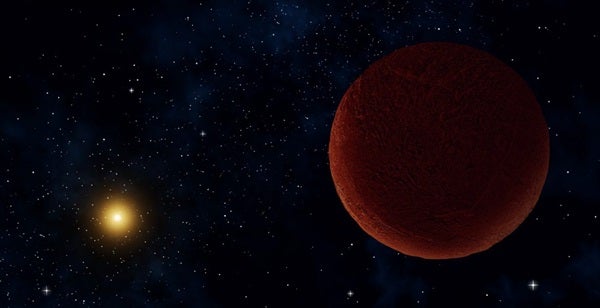Astronomers revealed more information about the very distant solar system object 2014 UZ224, aka DeeDee.
DeeDee is a trans-Neptunian object (TNO) that was first discovered by a team of astronomers led by David Gerdes, a scientist at the University of Michigan and lead author of the paper in the Astrophysical Journal Letters. Gerdes was using the 4-meter Blanco telescope at the Cerro Tololo Inter-American Observatory in Chile for the Dark Energy Survey, which gave astronomers an extraordinary number of images. While most of those photos turned out to be distant galaxies, some showed signs of TNOs, and of that small amount of TNO photos, 12 photos were of DeeDee, which is short for Distant Dwarf.
DeeDee is the second farthest known TNO in the outskirts of the Kuiper Belt with a confirmed orbit, but otherwise not much was known about it until recently.
Astronomers collected some amazing details about DeeDee using the Atacama Large millimeter/submillimeter Array (ALMA) and just recently released the information, including that it is about 635 kilometers (394 miles) across and that its mass means it should be spherical, which puts it in the running to become a dwarf planet.
One astronomical unit is the distance from the Earth to the Sun, or about 150 million kilometers, and DeeDee is currently a whopping 92 AUs away. Completing one orbit takes DeeDee 1,100 years to finish and light takes 13 hours to get to Earth.
The team used ALMA’s ability to detect heat and found that DeeDee would only be about -405 degrees Fahrenheit (-243 degrees Celsius), according to Gerdes. Along with being incredibly cold, DeeDee is also not very reflective, only reflecting 13 percent of sunlight.
Discovering all this information about DeeDee leaves astronomers optimistic about the ability to detect far away, slow moving objects in our solar system and may use some of these techniques to look for Planet Nine.
“There are still new worlds to discover in our own cosmic backyard,” Gerdes said in a press release. “The solar system is a rich and complicated place.”










